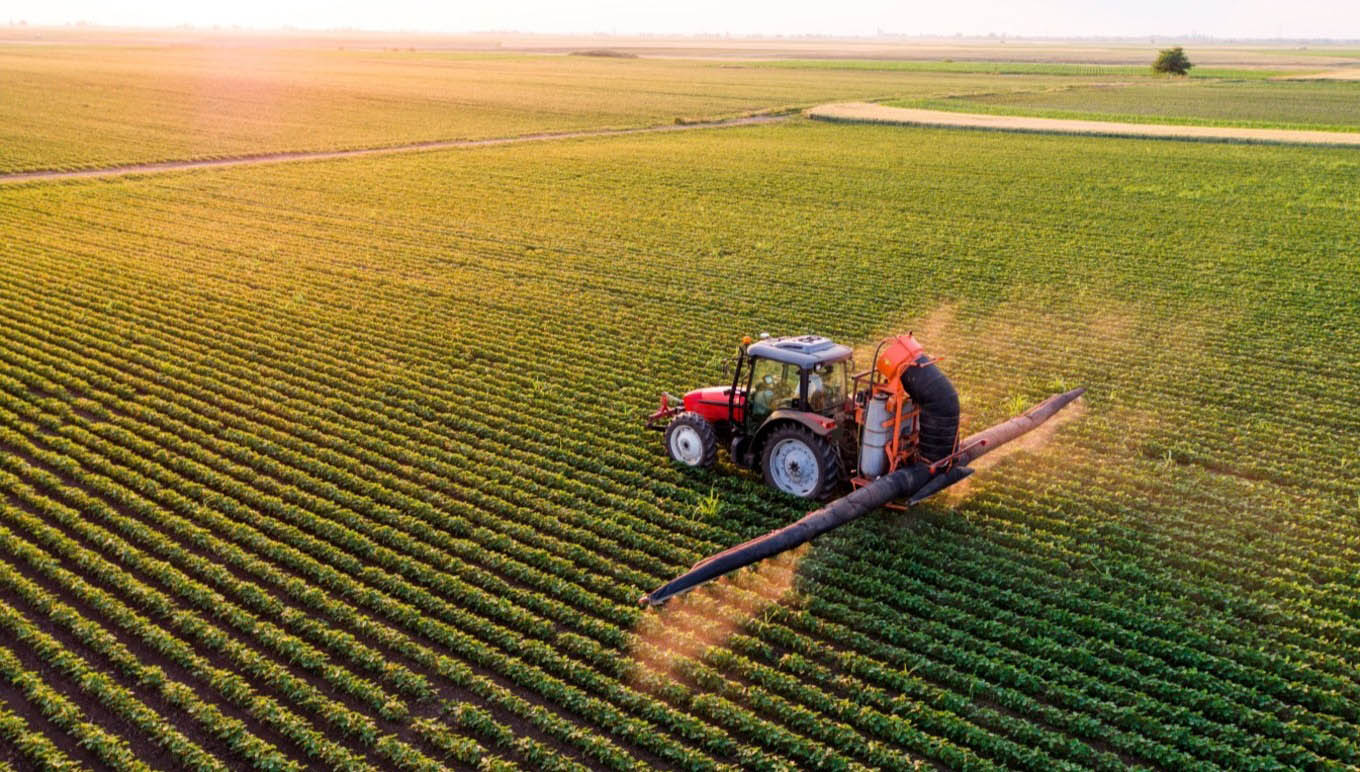Why and How Your Food and Beverage Business Can Contribute to a Circular Economy
Why and How Your Food and Beverage Business Can Contribute to a Circular Economy
Why and How Your Food and Beverage Business Can Contribute to a Circular Economy
Mar 2, 2022
 John McCurdy | Senior Content Writer, Marketing
John McCurdy | Senior Content Writer, Marketing
The statistics on the food industry’s environmental impact are staggering. According to Our World in Data, food and agriculture are responsible for 26% of all greenhouse gas emissions, 50% of habitable land use, 70% of fresh water use and 78% of all eutrophication, or global ocean and fresh water pollution.
Put it all together, and it paints a pretty gloomy picture. If we’re going to protect our planet and ensure the longevity of our communities, we can’t make just a few small changes and expect big results. We need to completely rethink the way our systems operate and restructure from the ground up.
We can begin by recognizing that our economic model has a major flaw, that being that it is linear in nature—that is, products are treated as though they are worthless at the end of their intended lifecycle and thus become waste. The better alternative and long-term goal is to establish a circular economy.
What does that look like, and how do we get there? Read on for a full explanation, as well as how your food and beverage business be a part of the solution.
Defining Circular Economy
Put simply, a circular economy is one that aims to reclaim and reuse products and materials as much as possible to minimize the destruction of value. Recycling, sustainable farming and green manufacturing are all components of this model, but none of these practices entirely encapsulates the idea—the larger concept is predicated on creating a loop through which resources pass continually, thus the name, “circular economy.”
There are both simple biologically based methods of creating these loops, like composting organic material to enrich soil for new growth, and more sophisticated technical approaches, such as bioengineering the shape of our produce to minimize waste in the creation of certain products. It’s worth noting that while some of those more advanced strategies may be cost-prohibitive for smaller organizations, every company has a role to play and can get started by following the steps below.
of all greenhouse gas emissions are created by the food and agriculture industries
4 Steps to Support a Circular Economy in the Food Industry
If becoming more environmentally responsible is one of your business’s goals, here are some measures to implement in your efforts to contribute to a circular economy:
1. Develop More Sustainable Products and Processes
Before your research and development teams dive headlong into creating sustainable offerings, you’ll first want to scrutinize your current product lineup and manufacturing processes to identify which might be resulting in excessive waste or consuming a disproportionate amount of resources. This will inform your teams on what materials and processes to avoid as they go about researching more eco-friendly alternatives.
Incorporating plant-based proteins, implementing hydroponic growing methods and sourcing ingredients more responsibly are all potential ways your company can get greener and shrink your footprint. Take advantage of any and all efficiency metrics that your business systems can produce to determine what’s working and what’s not, and iterate until you find ideas that are optimal for your circumstances.
2. Reduce and Repurpose Waste
We mentioned in the section above the value of quantifying the performance and results of your current processes, and that will also be key in cutting back on the waste your operations generate. For those lines that are producing excessive scrap, dig deep to find the root cause—is could be that your equipment is poorly suited to the ingredients it processes or as simple as a cooking temperature set too high that’s resulting in burned or dried-out finished goods.
And as for your unavoidable manufacturing by-products, actively search for ways that they can be repurposed and reused. Examples can be found across a number of industry sub-verticals, including the derivation of starch from wastewater, the application of stale bread in fermentation processes and the incorporation of fruit peels in brewing.
3. Re-Optimize Supply Chains and Distribution
Generally, modern supply chains and distribution models are optimized for profitability and moving the largest volume of goods to their destinations as quickly as possible. That, of course, necessitates the consumption of fossil fuels, which generates tremendous amounts of carbon dioxide and other greenhouse gases.
This simply can’t remain the case going forward if we’re to establish a circular economy. Utilizing shorter supply chains and working with more local farmers are excellent strategies for reducing the amount of pollution contributed by the food industry. Provided it is economically feasible for your organization, you can also look into utilizing alternative energy sources and working with transportation providers with electric or biofuel fleets.
4. Raise Awareness and Collaborate
In order for a true circular economy to be embraced and perpetuated for systemic change, it will be necessary to get the buy-in of your employees, customers and supply chain partners. Your brand will need to be a champion for the model, publicizing its benefits not just for your company but society at large.
Changes occurring at higher levels will help to validate the concept of a circular economy on a larger scale, so look for opportunities to be a part of those movements being launched by environmental associations, alliances and even national governments.
A good example is the Netherlands’ commitment to create a circular economy by 2050—launched in 2016, the campaign has already resulted in the signing of the Raw Materials Agreement in 2017, by which the country resolved to address the “disposable lifestyle” and the wasting of resources.
Accelerating Your Efforts with Technology
Keep in mind that without a strong operational foundation, your business may struggle to achieve optimal results in your initiative to support a circular economy. The right cross-functional digital platform that can help drive holistic change—like an enterprise resource planning (ERP) solution built for the food and beverage industry—can be a game-changer for organizations trying to get greener.
With automated data collection and powerful analytical tools, an ERP system can help you find those procedures that need retooling to reduce waste generated. An advanced food and beverage software like Aptean Food & Beverage ERP can also sync up with new technologies, including smart sensors and Internet of Things-enabled devices, to further fine-tune processes for minimal scrap and optimal resource efficiency.
Supply chain management is another critical feature of ERP for businesses striving to facilitate a circular economic model. Because you may be working with new partners as you search for more environmentally friendly material providers and possibly restructuring your distribution model, you need complete control and visibility as you reconfigure your products’ journeys from source to destination.
At Aptean, we’re serious about developing the tools that you need to become more sustainable, and our full suite of software can cover your electronic proof of delivery (ePOD), overall equipment effectiveness (OEE) and routing and scheduling needs. Plus, they’re all seamlessly integrated with our ERP for food and beverage, so aligning your efforts across all aspects of the enterprise is a simplified, streamlined matter.
Ready to learn more about Aptean Food & Beverage ERP and how it can help your business support a circular economy? Contact us today, or request a personalized demo.
These 10 clients from across various food and beverage sectors achieved more with our solution.



